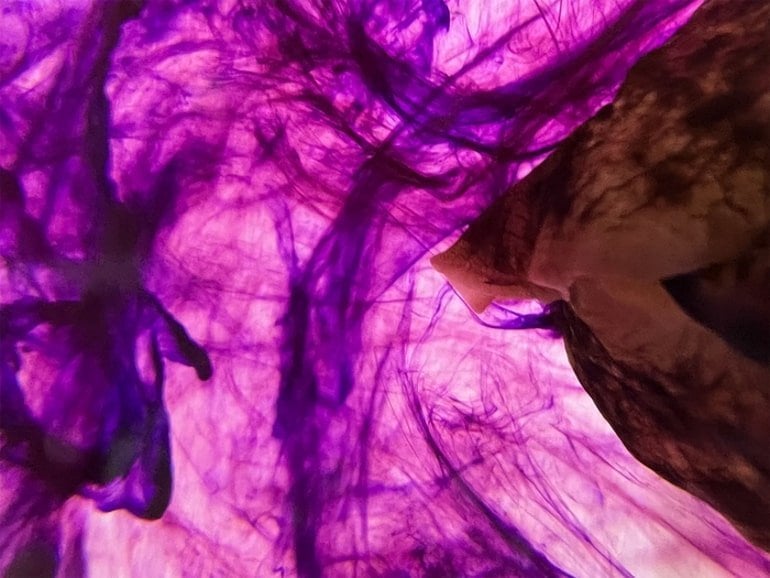Summary: Study identifies a set of proteins that undergo experience-dependent changes while forming both short-term and long-term memories.
Source: University of Florida
Think of a new longer-term memory as a construction site inside the brain. The brain’s neurons restructure themselves and build or demolish connections with other neurons to store the memory for retrieval when needed.
The neurons can’t do the work without help. They need building materials from a distant warehouse. So, trucks hit the highway to transport cargo to the construction site.
The cargo of those trucks varies over time depending on the strength of the memory. Do the neurons need supplies to build a structure that endures hours, days, weeks or even years?
Researchers at The Herbert Wertheim UF Scripps Institute for Biomedical Innovation & Technology have discovered that these cellular building materials — in this case, sets of proteins — undergo experience-dependent changes while forming short- and long-term memories.
A paper on the discovery by a team of Wertheim UF Scripps Institute scientists was published on Jan. 5 in eNeuro, an open-access journal of the Society for Neuroscience.
It’s a glimpse into the brain’s plasticity, or its ability to adapt and change its structure as we live our lives and accumulate memories.
Additionally, it enlightens future research about how the brain’s enormously complex systems operate. That has potential implications, scientists said, for better understanding neurological disorders. Those include Alzheimer’s and amyotrophic lateral sclerosis, known as ALS or Lou Gehrig’s disease.
“This is giving us a much more detailed insight into a process that we know is important for memory,” said senior author Sathyanarayanan V. Puthanveettil, Ph.D. He is an associate professor at The Wertheim UF Scripps Institute.
“The connections of these neurons need to be selectively modified to form long-term memory,” he added. “And for the modification to occur, the neuron needs to send materials from the cell’s soma to its distant synapses. Unique packets of proteins are sent, and this cargo of proteins changes over time as memory is encoded. This is an exciting finding.”
The soma is the main cell body of a neuron where its nucleus resides, while synapses are the place where connections between neurons are built. On a cellular level, it’s a long trip.
Puthanveettil’s team used a species of sea slug called Aplysia to explore how memories are encoded. The slugs have gigantic neurons compared with those in the human brain, making them easier to study.
A neural mechanism for storing certain memories in slugs is thought to be extremely similar to what occurs in the human brain, Puthanveettil said.
Memory, of course, is the essence of what it means to be human.
Sometimes memories are short-lived, as when we see a stranger’s face at a party and cannot recall it the next day. A simple biochemical change in the brain creates shorter-term memories that are with us for several minutes to a few hours, he said.

Longer-term memories, however, bring out the full construction crew that indelibly encodes the brain’s circuitry, especially when the brain is sensitized to a strong event — a car crash, a child’s birth, the moment someone learns shocking news.
Puthanveettil said how the brain accomplishes this has been poorly understood, and even now, it will take much more research to fully decipher the cellular building blocks that form memory.
The material that moves between soma and synapse includes numerous proteins, which are crucial workhorses that drive many of the processes and chemical reactions that allow human cells to function and carry out tasks.
Other cellular materials might also change over time, Puthanveettil said. But that will be a topic of future research.
About this memory and learning research news
Author: Eric Hamilton
Source: University of Florida
Contact: Eric Hamilton – University of Florida
Image: The image is credited to Abhishek Sadhu
Original Research: Open access.
“Short-Term and Long-Term Sensitization Differentially Alters the Composition of an Anterograde Transport Complex in Aplysia” by Sathyanarayanan Puthanveettil et al. eNeuro
Abstract
Short-Term and Long-Term Sensitization Differentially Alters the Composition of an Anterograde Transport Complex in Aplysia
Long-term memory formation requires anterograde transport of proteins from the soma of a neuron to its distal synaptic terminals. This allows new synaptic connections to be grown and existing ones remodeled. However, we do not yet know which proteins are transported to synapses in response to activity and temporal regulation.
Here, using quantitative mass spectrometry, we have profiled anterograde protein cargos of a learning-regulated molecular motor protein kinesin [Aplysia kinesin heavy chain 1 (ApKHC1)] following short-term sensitization (STS) and long-term sensitization (LTS) in Aplysia californica.
Our results reveal enrichment of specific proteins associated with ApKHC1 following both STS and LTS, as well as temporal changes within 1 and 3 h of LTS training.
A significant number of proteins enriched in the ApKHC1 complex participate in synaptic function, and, while some are ubiquitously enriched across training conditions, a few are enriched in response to specific training. For instance, factors aiding new synapse formation, such as synaptotagmin-1, dynamin-1, and calmodulin, are differentially enriched in anterograde complexes 1 h after LTS but are depleted 3 h after LTS.
Proteins including gelsolin-like protein 2 and sec23A/sec24A, which function in actin filament stabilization and vesicle transport, respectively, are enriched in cargos 3 h after LTS.
These results establish that the composition of anterograde transport complexes undergo experience-dependent specific changes and illuminate dynamic changes in the communication between soma and synapse during learning.






